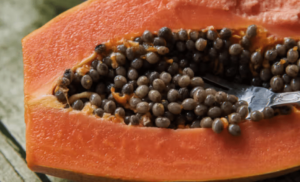Flatten Your Stomach with One Simple Move
Hey there, fitness seekers! If you’re tired of the same old calorie-counting grind and unending sit-ups to tighten your midsection, you’re in for a treat. Today, I’m spilling the tea on a game-changing approach to weight loss—and yes, it includes one killer move that’s not a sit-up. Ready to rethink everything you’ve been told about flattening your stomach? Let’s dive in.
The Calorie Deficit Myth: Why It’s Not the Whole Story
You’ve probably heard it a million times: to lose weight, just burn more calories than you eat. Simple, right? Well, not quite. While a calorie deficit is part of the equation, it’s not the magic bullet we’ve been sold. Here’s the deal—our bodies aren’t basic calculators with inputs and outputs. They’re complex systems run by something called the endocrine system, which adapts to our environment.
Cut calories too drastically, and your body fights back. Your metabolism slows down to conserve energy (hello, sluggish vibes), and those hunger cravings? They kick into overdrive, testing your willpower like never before. I’ve asked countless folks who’ve struggled with weight loss when their “stubborn metabolism” kicked in—most say it started in their late 20s or 30s, often after years of restrictive diets. Coincidence? I think not.
The calorie deficit model sounds good on paper, but it’s rarely sustainable long-term. So, what’s the missing piece? Let’s talk hormones—specifically, insulin.
Insulin: The Fat-Burning Gatekeeper
If you want to torch body fat, you’ve got to understand insulin. This hormone decides whether your body stores fat or burns it. High insulin levels—spiked mostly by carbohydrates—lock fat away, making it tough to shed those extra pounds. But here’s the kicker: lower your insulin, and your body flips the switch to fat-burning mode.
Check this out from Guyton’s Physiology (a goldmine of sciencey goodness): “All aspects of fat metabolism are greatly enhanced in the absence of insulin” (p. 927). And on page 822: “When carbohydrates are not utilized for energy, almost all of the energy of the body must come from the metabolism of fats.” Translation? Cut the carbs, drop the insulin, and watch your body tap into its own fat stores for fuel.
Not all calories are created equal. Carbs spike insulin the most, proteins have a moderate effect, and fats? They’re practically neutral. So, if you’re serious about losing weight—especially that stubborn belly fat—it’s time to rethink the type of calories you’re eating, not just the number.
The Ketogenic Edge: Burn Fat, Ditch Cravings
Enter the ketogenic diet: low carbs, high fats, moderate protein. By slashing carbs to about 5% of your intake (with 20% protein and the rest healthy fats), you force your body to adapt. After 2–3 days, you’ll hit ketosis, where your body starts producing ketones from fat for energy. Give it 2–3 weeks, and you’ll reach fat adaptation—the sweet spot where your body’s a fat-burning machine.
Imagine this: You’re eating 1,500 calories a day on keto, but your body’s also pulling 500–800 calories from your fat reserves. That’s extra energy without extra food! The best part? Hunger and cravings vanish. Why? Because your body’s snacking on its own fat between meals. Compare that to straight-up calorie cutting—where you’re starving and dreaming of donuts all day—and it’s no contest.
Fat packs over double the energy of glucose, making it a powerhouse fuel source. Think of your body fat as a biological pantry—there to keep you going without raiding your kitchen. I’ve seen this work wonders with over 8,000 people (proof’s on my website!), and it can work for you too.
The One Move to Tighten Your Tummy: Meet the Dead Bug
Now, let’s get to that promised exercise. Say hello to the dead bug—a funny name for a seriously effective move. This isn’t about bulking up your abs; it’s about toning and tightening your midsection, targeting both the superficial fat and the deeper fascia (that gel-like tissue that can get flabby if ignored). Bonus: It’s way better than sit-ups, which overwork your hip flexors and throw your back out of whack.
Here’s how to nail it:
-
- Set Up: Lie on your back, knees bent at 90° over your hips, arms pointing straight up to the ceiling. Keep your lower back flat against the floor (no gaps!).
-
- Move: Slowly extend your left leg out, keeping your toes pointed up, while holding that lower back steady. Optional: Extend your right arm back overhead for extra tension.
-
- Switch: Reset to the start, then alternate sides. Focus on control—don’t let your back arch.
-
- Repeat: Do this daily for 1–2 weeks, and you’ll feel your stomach pulling in like a natural girdle.
The dead bug strengthens your core, improves coordination, and keeps everything long and lean. Pair it with the low-carb approach, and you’ll tackle both visceral fat (the deep stuff) and that outer layer spilling over.
Wrap-Up: Your Path to a Tighter Midsection
Forget the outdated “eat less, move more” mantra. Lower your insulin with a ketogenic diet, tap into your fat stores, and add the dead bug to your routine. In just a couple of weeks, you’ll see—and feel—the difference. Want the full scoop on the diet? I’ve got a video linked here with all the details.
So, what do you think—ready to ditch the sit-ups and give this a shot? Drop a comment below and let me know how it goes!
Share this content:











